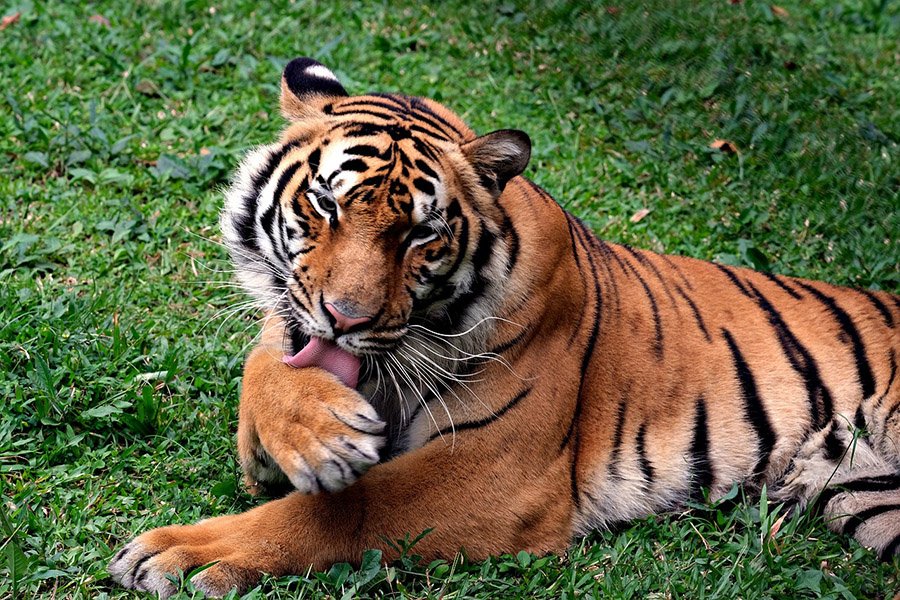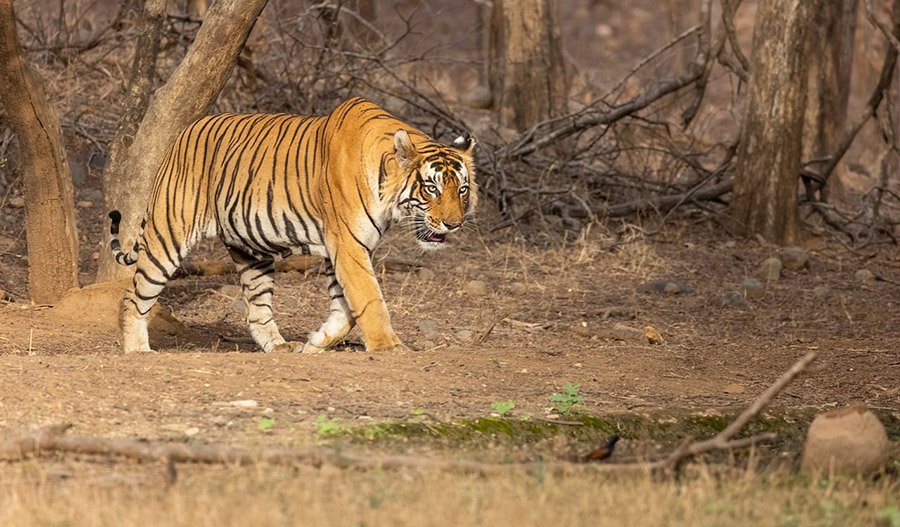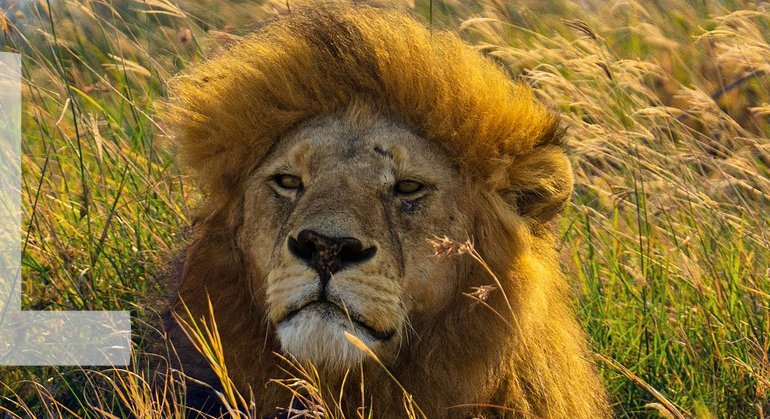The Bengal tiger, a symbol of raw power, elegance, and the untamed beauty of the wild, reigns as one of the most iconic animals in the world. This majestic big cat has, for generations, played an intricate role in the culture, mythology, and folklore of the Indian subcontinent.
Through this article, we journey into the wild territories of the Bengal tiger, exploring its biology, behaviors, and the pressing conservation issues surrounding it.
The Bengal Tiger at a Glance
Classification
| Kingdom: | Animalia |
| Phylum: | Chordata |
| Class: | Mammalia (Mammals) |
| Order: | Carnivora |
| Family: | Felidae |
| Genus: | Panthera |
| Species: | P. tigris |
| Subspecies: | P. t. tigris |
Essential Information
| Average Size: | 8.8 to 10.2 feet (2.7 to 3.1 meters) nose to tail tip |
| Average Weight: | Males: 419 to 569 lbs (190 to 258 kg), Females: 220 to 352 lbs (100 to 160 kg) |
| Average Lifespan: | 10-15 years in the wild; up to 20 years in captivity |
| Geographical Range: | India, Bangladesh, Nepal, and Bhutan |
| Conservation Status: | Endangered (IUCN Red List) |
Species and Subspecies
The tiger (Panthera tigris) has multiple subspecies, among which the Bengal tiger (Panthera tigris tigris) is the most abundant. Although often simply referred to as the “tiger,” the Bengal subspecies is specifically native to the Indian subcontinent.
It is important to differentiate the Bengal tiger from other subspecies like the Siberian tiger, the Sumatran tiger, and the Indochinese tiger, among others. Key differences include size variations, habitat preference, and coloration patterns.
The Bengal tiger is unique in its wide range of color variations. Apart from the typical orange individuals with black stripes, there are also white Bengal tigers and the extremely rare golden tigers. These color differences are due to specific genetic mutations.

Description
A quintessential representation of grandeur, the Bengal tiger is distinguished by its vibrant orange coat, accentuated with dark stripes that range from brown to black. The underbelly and the insides of its limbs are white or light grey, offering a stark contrast. Its tail, dense with fur, has a series of rings and ends in a white tip.
Male Bengal tigers are generally larger than their female counterparts. While males exhibit a more pronounced ruff or “mane” around the neck and cheek areas, females have a leaner physique.
On average, male Bengal tigers can measure up to 10 feet (3 meters) from nose to tail tip, weighing between 419 to 569 lbs (190 to 258 kg). Females, on the other hand, tend to be around 8.8 feet (2.7 meters) in length, weighing between 220 to 352 lbs (100 to 160 kg).
The face of a Bengal tiger is a captivating sight. With a pronounced forehead, robust cheekbones, and piercing round eyes that can range from green to yellow, it embodies the very essence of a wild predator. The unique pattern of stripes on a tiger not only aids in camouflage but also serves as an individual identifier, much like human fingerprints.
Habitat and Distribution
The Bengal tiger, once widespread across the Indian subcontinent, is now confined to pockets of preserved forests and national parks.
These habitats vary considerably, ranging from the dry grasslands of Ranthambore in India to the lush Sundarbans mangrove forests straddling India and Bangladesh.
Bengal tigers have shown adaptability to a myriad of habitats, from the swamps and marshes of the Sundarbans to the foothills of the Himalayas in Bhutan and Nepal.
The majority of Bengal tigers are found in India, and distributed across various states in a series of tiger reserves created under the Project Tiger initiative. Smaller populations persist in Bangladesh, Nepal, and Bhutan.
The unique mangrove ecosystem of the Sundarbans is the only place in the world where tigers are found in a brackish water habitat.

Behavior
Predominantly nocturnal, Bengal tigers are known to be most active during the early hours of dawn and late evening. However, in areas with little to no human disturbance, they can be observed during the day. These solitary animals are known for their territorial nature, with males having larger territories that often overlap with those of several females.
Unlike lions, tigers are solitary creatures. They are fiercely territorial, marking their territories with scent markings using urine, feces, and scent glands to ward off potential rivals. Vocalizations such as roars, moans, and growls are used both as threats and communication between individuals, especially a mother and her cubs.
Tigers communicate through a combination of vocalizations, body language, and scent markings. The iconic roar of a tiger can be heard up to 3 km away, primarily used to establish territory or attract potential mates. Chuffing, a less-known form of communication, is a friendly gesture, often exchanged between a mother and her cubs.
Diet and Feeding Behavior
Bengal tigers are apex predators, playing a crucial role in maintaining the health and balance of their ecosystem. As carnivores, they predominantly hunt medium to large-sized ungulates such as chital, sambar, and wild boar. However, their diet can vary based on availability, sometimes even including smaller prey like birds, monkeys, and hares.
Bengal tigers are ambush predators. They rely on their keen senses of sight and smell, as well as their stealth, to get close to their prey before launching a quick and powerful attack. A tiger’s powerful jaw and sharp teeth are well-suited for delivering a fatal bite to its prey.
After making a kill, it’s common for the tiger to drag the carcass to a secluded area to eat in peace. A single tiger can consume up to 88 pounds (40 kilograms) of meat in one meal, although such large meals are infrequent.
Predators
Being apex predators, adult Bengal tigers face no natural threats from other wildlife in their habitat. However, the same cannot be said for tiger cubs.
Vulnerable during their early months, they can fall prey to animals like leopards, hyenas, and even large birds of prey. Additionally, male tigers might kill cubs that are not their own, a behavior known as infanticide, to make the female receptive to mating again.
Nevertheless, the most significant threat to Bengal tigers is not from the animal kingdom but from humans. Habitat loss, human-tiger conflicts, and, most significantly, poaching for their fur and body parts have led to a significant decline in their numbers.

Reproduction and Life Cycle
Bengal tigers, like other tiger subspecies, do not have a specific mating season. However, most mating activities tend to occur between November and April. After a gestation period ranging between 104-106 days, a tigress gives birth to a litter of typically 2 to 4 cubs. Rarely, the number can go up to 6.
During the initial weeks, the cubs are blind and entirely dependent on their mother for nutrition and protection. They will begin to eat meat at around two months of age but will continue to nurse for 5 to 6 months.
By the age of 2, they are competent hunters, and soon after, they will leave their mother to establish territories of their own. In the wild, Bengal tigers generally live up to 10-15 years, while in captivity, with the absence of threats, they might live up to 20 years or more.
Conservation and Threats
The Bengal tiger is classified as ‘Endangered’ on the IUCN Red List. The major threats include habitat loss due to deforestation and urbanization, human-tiger conflicts, and poaching for the illegal wildlife trade.
Tiger parts are in high demand in traditional Asian medicine, despite there being no scientific evidence to support their medicinal properties.
Conservation efforts, most notably ‘Project Tiger‘ launched in 1973 by the Indian government, have been instrumental in stabilizing tiger numbers in India.
This initiative led to the establishment of numerous tiger reserves where habitats are preserved, and strict anti-poaching measures are implemented.
Collaborative efforts between India, Nepal, Bhutan, and Bangladesh aim to secure corridors and habitats for tigers, ensuring genetic diversity and allowing for the natural movement of individuals.
Fun Facts
- The unique stripe pattern on a tiger acts like fingerprints in humans. No two tigers have the same pattern.
- Tigers are known to be excellent swimmers and often soak in ponds and lakes to cool off.
- Bengal tigers have the most varied diet among all wild cat species due to their diverse habitat range.
- The white tiger is not a separate subspecies but is a result of a recessive gene in Bengal tigers.
- Tigers have excellent night vision, about six times better than that of a human, which makes them formidable hunters in the dark.
Frequently Asked Questions
How do Bengal tigers differ from other tiger subspecies?
The Bengal tiger is primarily distinguished by its coat’s vibrant orange color and relatively dense stripe pattern. Size and habitat also vary compared to other subspecies.
Are white tigers albinos?
No, white tigers are not albinos. They have a genetic condition called leucism which reduces pigmentation.
Why do tigers roar?
Tigers roar for various reasons, including establishing territory, calling for a mate, or even communicating with cubs.
Do tigers get along with other animals?
Being solitary animals, tigers usually keep to themselves. However, in the wild, they may share their kill with other animals, especially when they’re not hungry.
How far can a tiger travel in one night?
A tiger can roam around its territory, covering distances of 10 to 20 miles in a single night, depending on factors like hunger, mating urges, or territorial disputes.
How fast can a Bengal tiger run?
Bengal tigers can reach speeds of up to 35-40 mph (56-64 km/h) in short bursts while hunting.
Do Bengal tigers climb trees?
They are not known for their tree-climbing abilities, but young tigers and smaller females may climb trees occasionally, usually to escape a threat.
How many teeth does a Bengal tiger have?
A Bengal tiger has 30 teeth, including large canines that can be up to 3 inches (7.5 cm) long.
Are Bengal tigers territorial?
Yes, they are highly territorial. Males usually have larger territories that overlap with those of several females.
Other Articles to Learn More About Tigers
- Tiger Habitat: Where Do Tigers Live?
- How Long Do Tigers Live? Tiger Lifespan & Life Cycle
- What Do Tigers Eat? A Look At Their Favorite Food
- Are Tigers Friendly? Do They Make Good Pets?
- What Eats Tigers? – Top Tigers Predators
- Are Tigers Dangerous? Do They Attack and Eat Humans?
- Tiger Anatomy & Physical Characteristics – Everything You Wanted To Know
- Tiger Communication: How Do Tigers Communicate With Each Other?
- Extinct Tigers: A Look At The Three Extinct Subspecies
- Types of Tigers – Overview of All 9 Subspecies of Tigers
- Male Tiger vs. Female Tiger – How to Tell Them Apart?
- Do Lions And Tigers Live Together?
- Do Tigers Eat Leopards? A Complete Answer





